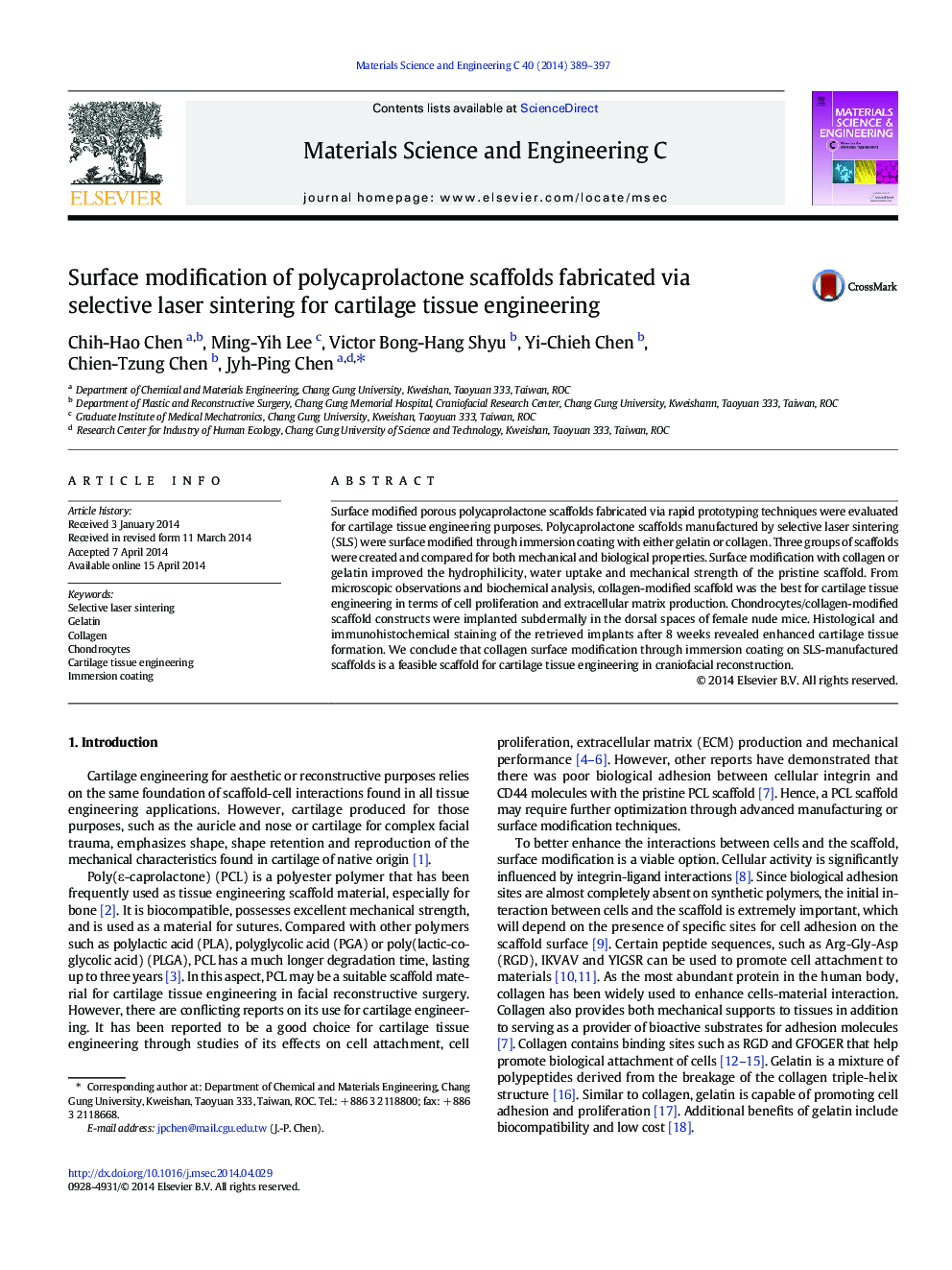| Article ID | Journal | Published Year | Pages | File Type |
|---|---|---|---|---|
| 1428356 | Materials Science and Engineering: C | 2014 | 9 Pages |
•Selective laser sintered polycaprolactone scaffolds are prepared.•Scaffolds are surface modified through immersion coating with gelatin or collagen.•Collagen-scaffold is the best for cartilage tissue engineering in vitro.•Chondrocytes/collagen-scaffold reveals enhanced cartilage tissue formation in vivo.
Surface modified porous polycaprolactone scaffolds fabricated via rapid prototyping techniques were evaluated for cartilage tissue engineering purposes. Polycaprolactone scaffolds manufactured by selective laser sintering (SLS) were surface modified through immersion coating with either gelatin or collagen. Three groups of scaffolds were created and compared for both mechanical and biological properties. Surface modification with collagen or gelatin improved the hydrophilicity, water uptake and mechanical strength of the pristine scaffold. From microscopic observations and biochemical analysis, collagen-modified scaffold was the best for cartilage tissue engineering in terms of cell proliferation and extracellular matrix production. Chondrocytes/collagen-modified scaffold constructs were implanted subdermally in the dorsal spaces of female nude mice. Histological and immunohistochemical staining of the retrieved implants after 8 weeks revealed enhanced cartilage tissue formation. We conclude that collagen surface modification through immersion coating on SLS-manufactured scaffolds is a feasible scaffold for cartilage tissue engineering in craniofacial reconstruction.
